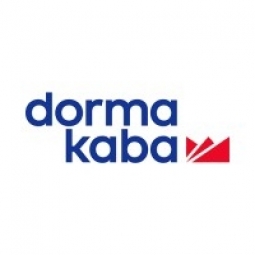公司规模
Startup
地区
- America
国家
- United States
产品
- DORMA ED100
- DORMA MAGNEO
技术栈
- Home Automation Systems
- Automated Door Systems
实施规模
- Pilot projects
影响指标
- Customer Satisfaction
- Productivity Improvements
技术
- 功能应用 - 远程监控系统
适用行业
- 医疗保健和医院
适用功能
- 设施管理
用例
- 楼宇自动化与控制
- 远程资产管理
服务
- 系统集成
关于客户
斯蒂芬·温思罗普 (Stephen Winthrop),MBA、顾问、企业家,马萨诸塞湾殖民地第一任总督约翰·温思罗普的直系后代,已成为 ALS(肌萎缩侧索硬化症)研究、宣传和患者权益的有力代言人。温思罗普于 2013 年 11 月被诊断出患有 ALS,他的使命是利用自己的时间不仅亲自对抗这种使人衰弱的疾病,而且还通过担任全国非营利性 ALS 协会的国家受托人,自愿奉献自己的时间和才华,为他人抗击这种疾病。哈佛大学以他的名义建立了一个 230 万美元的支出基金,即斯蒂芬·范·R·温思罗普 ALS 基金,以进一步推动该机构的 ALS 研究工作。温思罗普拍卖了他从 8 岁开始收集的珍贵硬币收藏,向该基金捐赠了 130 万美元。
挑战
2013 年 11 月被诊断患有 ALS 的 Stephen Winthrop 和他的妻子 Jane Williamson 建造了一座新家,其中的技术可以最大限度地提高房子对患有 ALS 的人的实用性。ALS 一直在缓慢发展,最初影响到他的手臂。它可能会扩散到他的腿和身体的其他部位。他们的房子配备了设备,使 Winthrop 能够通过计算机界面控制某些功能和电器(例如恒温器、门、灯、电视等)。随着 Winthrop 的 ALS 病情发展,这栋房子也易于进行改造。将来,他将能够仅使用自己的声音或眼球运动通过服务器来控制功能,该服务器将平板电脑与家中无数的电器设备电子连接起来。
解决方案
DORMA 的 MAGNEO 滑动门操作器采用电磁驱动,提供了技术上可靠的解决方案。传统的推拉门在完全打开和完全缩进墙内时,需要抓住可伸缩挂钩才能关闭,这对 Winthrop 来说很困难。但采用 DORMA 的配置,门距完全打开位置约 3 英寸,并有一个凹口,使 Winthrop 能够用肘部或脚轻推门关闭。该项目要求自动平开门操作器的宽度不超过 27 英寸。虽然大多数其他门操作器需要更宽更厚的箱体,但 DORMA 的 ED100 紧凑型设计适合空间限制并满足功能要求。ED100 自动平开门操作器还用于家中每个电梯平台(下层、一楼和二楼)的三扇门。当电梯到达平台时,ED100 会向框架中的电动锁扣发送信号,使其打开门,然后将门释放至 90 度,并持续预定的时间延迟,直到人员通过。
运营影响

Case Study missing?
Start adding your own!
Register with your work email and create a new case study profile for your business.
相关案例.

Case Study
Hospital Inventory Management
The hospital supply chain team is responsible for ensuring that the right medical supplies are readily available to clinicians when and where needed, and to do so in the most efficient manner possible. However, many of the systems and processes in use at the cancer center for supply chain management were not best suited to support these goals. Barcoding technology, a commonly used method for inventory management of medical supplies, is labor intensive, time consuming, does not provide real-time visibility into inventory levels and can be prone to error. Consequently, the lack of accurate and real-time visibility into inventory levels across multiple supply rooms in multiple hospital facilities creates additional inefficiency in the system causing over-ordering, hoarding, and wasted supplies. Other sources of waste and cost were also identified as candidates for improvement. Existing systems and processes did not provide adequate security for high-cost inventory within the hospital, which was another driver of cost. A lack of visibility into expiration dates for supplies resulted in supplies being wasted due to past expiry dates. Storage of supplies was also a key consideration given the location of the cancer center’s facilities in a dense urban setting, where space is always at a premium. In order to address the challenges outlined above, the hospital sought a solution that would provide real-time inventory information with high levels of accuracy, reduce the level of manual effort required and enable data driven decision making to ensure that the right supplies were readily available to clinicians in the right location at the right time.

Case Study
Gas Pipeline Monitoring System for Hospitals
This system integrator focuses on providing centralized gas pipeline monitoring systems for hospitals. The service they provide makes it possible for hospitals to reduce both maintenance and labor costs. Since hospitals may not have an existing network suitable for this type of system, GPRS communication provides an easy and ready-to-use solution for remote, distributed monitoring systems System Requirements - GPRS communication - Seamless connection with SCADA software - Simple, front-end control capability - Expandable I/O channels - Combine AI, DI, and DO channels

Case Study
Driving Digital Transformations for Vitro Diagnostic Medical Devices
Diagnostic devices play a vital role in helping to improve healthcare delivery. In fact, an estimated 60 percent of the world’s medical decisions are made with support from in vitrodiagnostics (IVD) solutions, such as those provided by Roche Diagnostics, an industry leader. As the demand for medical diagnostic services grows rapidly in hospitals and clinics across China, so does the market for IVD solutions. In addition, the typically high cost of these diagnostic devices means that comprehensive post-sales services are needed. Wanteed to improve three portions of thr IVD:1. Remotely monitor and manage IVD devices as fixed assets.2. Optimizing device availability with predictive maintenance.3. Recommending the best IVD solution for a customer’s needs.

Case Study
HaemoCloud Global Blood Management System
1) Deliver a connected digital product system to protect and increase the differentiated value of Haemonetics blood and plasma solutions. 2) Improve patient outcomes by increasing the efficiency of blood supply flows. 3) Navigate and satisfy a complex web of global regulatory compliance requirements. 4) Reduce costly and labor-intensive maintenance procedures.

Case Study
Cloud-based healthcare solution for Royal Philips
Royal Philips wanted to launch its cloud-based healthcare solution HealthSuite Digital Platform in China to deliver services to help cope with challenges related to urbanization and population growth. Philips wanted to achieve this goal by combining mobile, cloud computing and big data technologies. To bring this platform and product to market, Philips required cloud computing and local technical service capabilities in China, in addition to a flexible IT infrastructure that could handle user requests.








